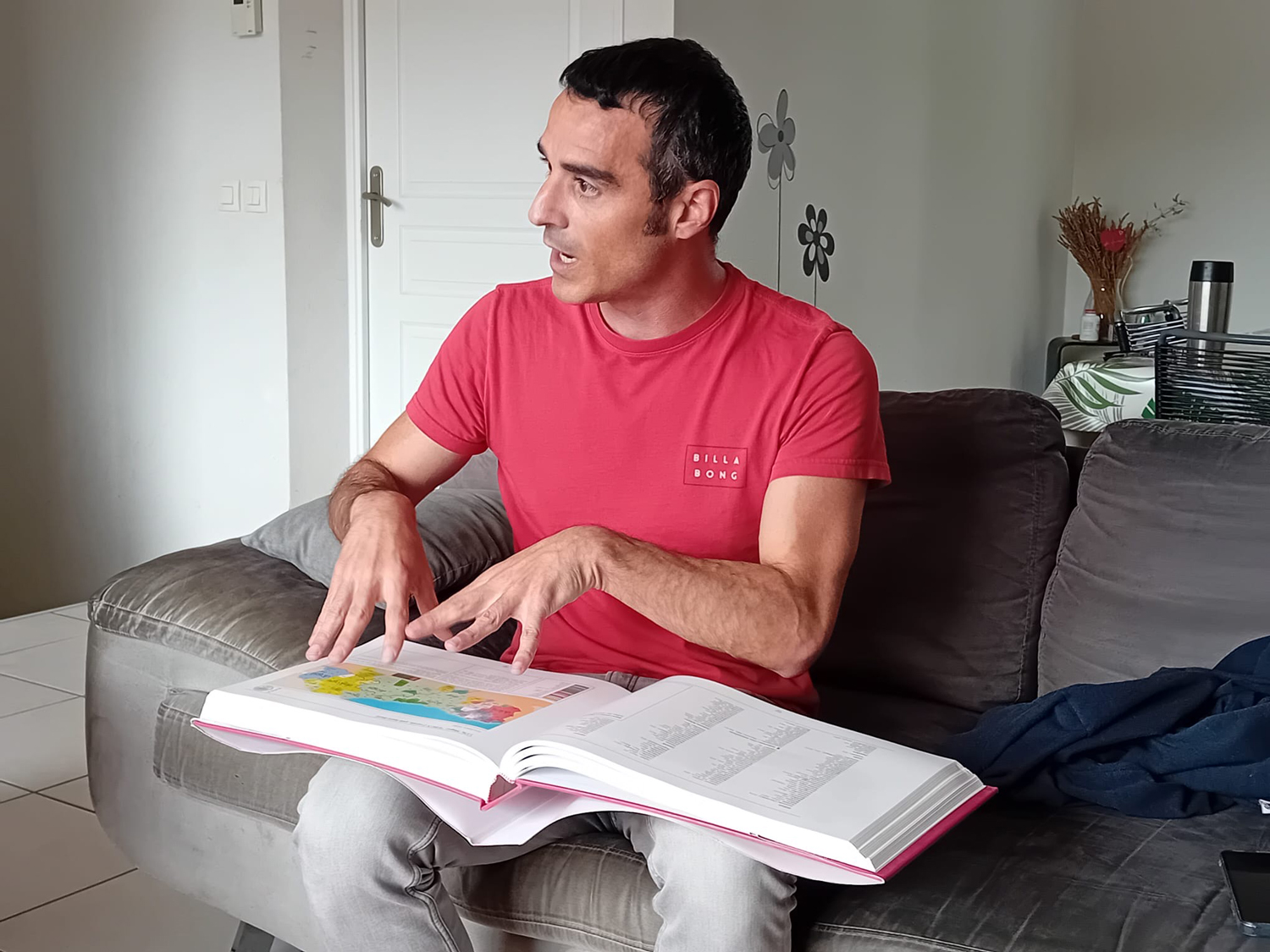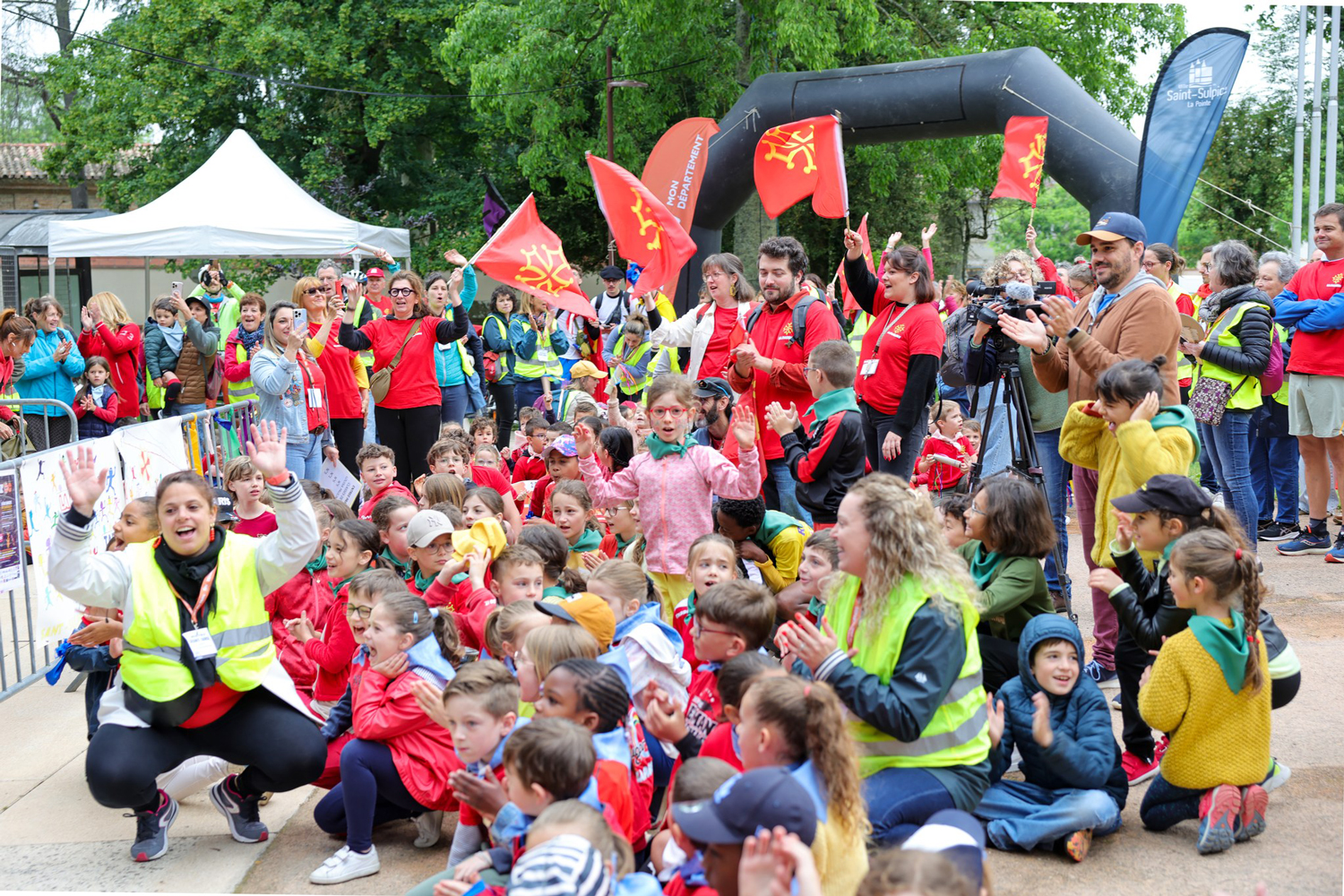Gascon, the silent echo of the Basques
- We barely look at it or we just don't even know it's there. It was permanently extinguished in the Southern Basque Country at the beginning of the 20th century and can suffer a similar fate in the Northern Basque Country. If strong measures are not taken, the gascon may be in its final stages. In Occitania, on the 23rd and 24th of May, an action was carried out in the eastern part of Toulouse that resembles the La Passem Run. La Passem is held every two years and the next one will be held in 2026. The year 2025 has been a more modest version of the traditional edition of 230 kilometers.

Pictures of Adishatz!, (Good morning to you! ); The Com vas?, (how's it going? )… From his Instagram account Bruno Muret is trying to capture the world’s attention. One of the life challenges for this 44-year-old thief is to revive a language that is in imminent danger. It’s not an easy task, much less that many locals don’t even know about it. Is Gascony the language of the Basque Country? Even in our country, it would hardly be invented by many.
In addition to the Northern Basque Country, the Gascon can now be heard in the Landes and Biarno regions, as well as in the Aran Valley of Catalonia. At the beginning of the 20th century it was alive in San Sebastián and in several coastal towns of Gipuzkoa, but it was quickly extinguished.
“My two moms had Gascon speakers, but they didn’t teach me. I had to learn it on my own and I’m currently trying to break it down,” says Muret at his home in the Zoka neighborhood. It is here that we have been welcomed by the enthusiastic pro-language activist under the auspices of shelves loaded with hundreds of books. Muret’s journey here, however, is a tale of a steep evolution. “When I was a kid, I didn’t give a damn about all this. All over France we know and internalize the word patois: pseudo-language, a language of poor quality... There has been a great disregard for languages that are not very French”, regrets Muret.
At a young age he began to learn Basque, but later discovered that Gascon was his family's native language. “It was only when my mother died that I realized that our language was also about to die. That’s when I felt like learning,” recalls the Souk.
Bruno Muret, the entrepreneur: "It was only when my mother died that I realized that our language was also about to die. That’s when I got the desire to learn.”
He is a professor of mathematics by profession and lives only a few meters from the sea he loves so much. Surfing has the tool to join him, but his connection with the Cantabrian goes much further. “When I studied Gascon I wanted to choose the dialect of the coast, of the Landes, but I lacked a lot of information. In this way, I personally created the grammatical guide of the variant called ‘black gascon’ or ‘sea gascon’,” explains Muret, after acquiring a copy from the surrounding shelves.
There seems to be a large number of books and documents that reveal the Bayonne variant, not the one researched by Bruno. His book is called Memento Grammatical de Gascon Maritime and he is not the only one who has written it.
Apart from the fact that the way to learn the language is steep, the simple act of speaking has not been easy for this thief: “I don’t have the opportunity to use it in everyday life, but there is a community of speakers, even if it is in the distance. I talk mostly to people I know on social media,” she tells us, gesturing to show her mobile phone in her hand.

Kings and Musketeers
Gascon has been the language not only of fishermen and shepherds, but also of kings, such as Henry IV of France and Richard I of England, alias The Lion. Although the latter was born in Oxford, he wrote poetry for troubadours in this language, since Leonor of Aquitaine was the son of the Queen of France and England, Richard I.
It is known that D’Artagnan by Alexandre Dumas and the three musketeers were also Gascon speakers. However, the imposition of the French language became a huge and insurmountable enemy for every language in the country. Thus, the decline of the gascon has been unstoppable for the last five centuries.
It is estimated that there are 250,000 speakers per day, but no precise data are available. In the UNESCO Atlas of the World’s Threatened Languages, it appears under the label “Language in danger of extinction”
It is estimated that there are 250,000 speakers per day, but no precise data are available. In the UNESCO Atlas of the World’s Threatened Languages, it appears under the label “Language in danger of extinction”. Children barely have a mother tongue, due to a violent discontinuity in intergenerational transmission. A number of actors have emerged who want to precipitate the language, but it is still to be seen whether their efforts will bear the expected fruit.
The Gascona Academy of Bayonne-Adur (Bayonne-Aturri Gascon Academy) is one of the pioneers. It was founded in 1926 by 40 personalities of culture and politics of Bayonne. With the main objective of protecting and strengthening the language, he has carried out eleven courses, translations and publications to date.
As seen in the Zoko, Bayonne also displays street signs and other indications in three languages (French, Basque and Gascon). In any case, the word Gascon can be found with citizens who are completely foreign to it, and the same happens if they go to the administrative offices.
At the end of a lost street in the city, we find the academy’s headquarters hidden in a small building that seems as marginalized as the language. It is, however, one of the protectorates of Basque romance. But he's not the only one.

From Vasconia to Gascony
“At Observatòri de las Culturas Gasconas we do everything we can: publications, courses, news... Unfortunately, our economic resources are very scarce; we are quite poor!” confesses Halip Lartiga, a member of the Gascon Culture Observatory, in a telephone interview. The 60-year-old Professor of Geography and History lives in Parasitzas (Biscarròssa, with Gascon). She says she has always talked about Gascon with her 30-year-old daughter, but she has not been able to talk to anyone else of her age at school.
Rather than diminishing, linguistic isolation has ignited Lartiga’s passion for work. The investigation into the identity of this expert has been highly acclaimed. In 2010 he published a work entitled Gasconha, Lenga e Identitat (Gasconha, language and identity). The expert looks at the cultural area from Garona to the Ebro. “First of all, we have the region of Aquitaine-Novempopulania from the Roman period. This is evidenced, among other things, by the Hazparn stone found there, the toponymy and/or the various written remains. Later, at the time of the Duchy of Baskonia, all the Basque territories in the north were part of this duchy”, Lartiga emphasizes. Even the main toponym says that it gives a “transparent track”: “They took their Gascony from the word Vasconia.”
In addition to studying history, the expert has researched the Gascon and its links with the Basque language. Among the languages that have emerged from Latin, Gascon is the romance of the Basques. “It has its origin in the Latin spoken by the peoples of Aquitaine, but the influence of the Basque-Aquitaine substrate is remarkable. The latter distinguishes Gascon from other Occitan variants (Catalan and Occitan). Although the language is romance, the Gascon has preserved the traces of the old Basque language and bears the echo of the Basques in its name,” adds Lartiga.
About Kike Amonariz: “The 20th century. Until the 19th century, documents written in Gascon in the municipal archives of San Sebastián were more than Basque. Even if it is the language of the Basque Country, we are not aware of it."
“All or None”
In addition to being a well-known communicator in the Basque Country, Kike Amonáriz is a Basque philologist and sociolinguist. It is not surprising, therefore, that the 63-year-old Tolosa has paid close attention to Gascon. It also shows concern: “The 20th century. Until the 19th century, documents written in Gascon in the municipal archives of San Sebastián were more than Basque. Although it is the language of the Basque Country, we are not aware of it. Its loss is the loss of a community, as well as the loss of an important part of the history of the Basque Country”, says Amonarriz, on the terrace of a small coffee shop in the center of Tolosa. In the capital of Gipuzkoa, the toponyms Urgull, Ulia, Morlans and Miramón, among others, recall the presence of the Gascones. In it, at the beginning of the 20th century, citizens with the surnames of Trecet, Arzac or Marquet came together to keep the language alive, albeit through a simple tertulia.
With regard to the decline of language, Amonarriz has put French centralism on the table. “On the one hand, there is a debate about whether Gascon and Occitan are the same language. I would say that Paris is promoting an equal division between Valencian and Catalan,” says the Tolosa. He also highlights the internal problems of the pro-language movement, such as the tendency to standardize the language too “transparent” and/or the weakness of the movement.
“Those of us who move around diminished languages must be clear: either we all save, or we all go back. In part, betting on Basque should also be betting on Occitan. Rather than working exclusively in our field, the proclamation can be extended,” says Tolosarra.
Given the downward trend in Gascon, the linguist wants to show hope: “The difficulties are enormous, but I think there are opportunities. If there is a strong people for which socio-political conditions are created, a process of revitalization can begin.”
The final impulse
From the corner, Bruno Muret also wants to look optimistically to the future. He admits it's hard: “In the last century, the Basque situation worsened and the Gascon almost disappeared. Can only activists like us keep the language alive?” asks the Souk without taking his eye off the rain from the balcony of his house. The entrepreneur, however, does not intend to give up. In order to pave the way for despair, remember the event of La Passem. It is a project in favor of the Occitan language, very similar to the Corrica, but very simple.
Muret believes that this type of initiative can strengthen the solidarity between the Basques and the Gascons: “It’s an impulse to raise awareness: we are alive and we look to the future,” says the Basque Gascon, Basque Gascon or whatever, in his desire to capture the world’s attention.
‘La Passem!’, ‘Running’ for the Occitan language
Since 2018 and every two years, La Passem!, a race for the Occitan Race, has been held. Each kilometer, a participant carries a witness called ligam: a handmade locker with a secret message written in Occitan as a symbol of the transmission of the language. On the run, you can buy miles for $100 each. Last year’s event covered a journey of 1,100 kilometres. The money goes to the promotion of the language. La Passem! aims to listen aloud to his proclamation: Occitan is not the language of the past, but the voice of the present that is alive and that must be transmitted from generation to generation. More information www.lapassemtarn.org is available on the website.
On the 23rd and 24th of May, a more modest edition of 230 kilometres has been held in the east of Toulouse.







